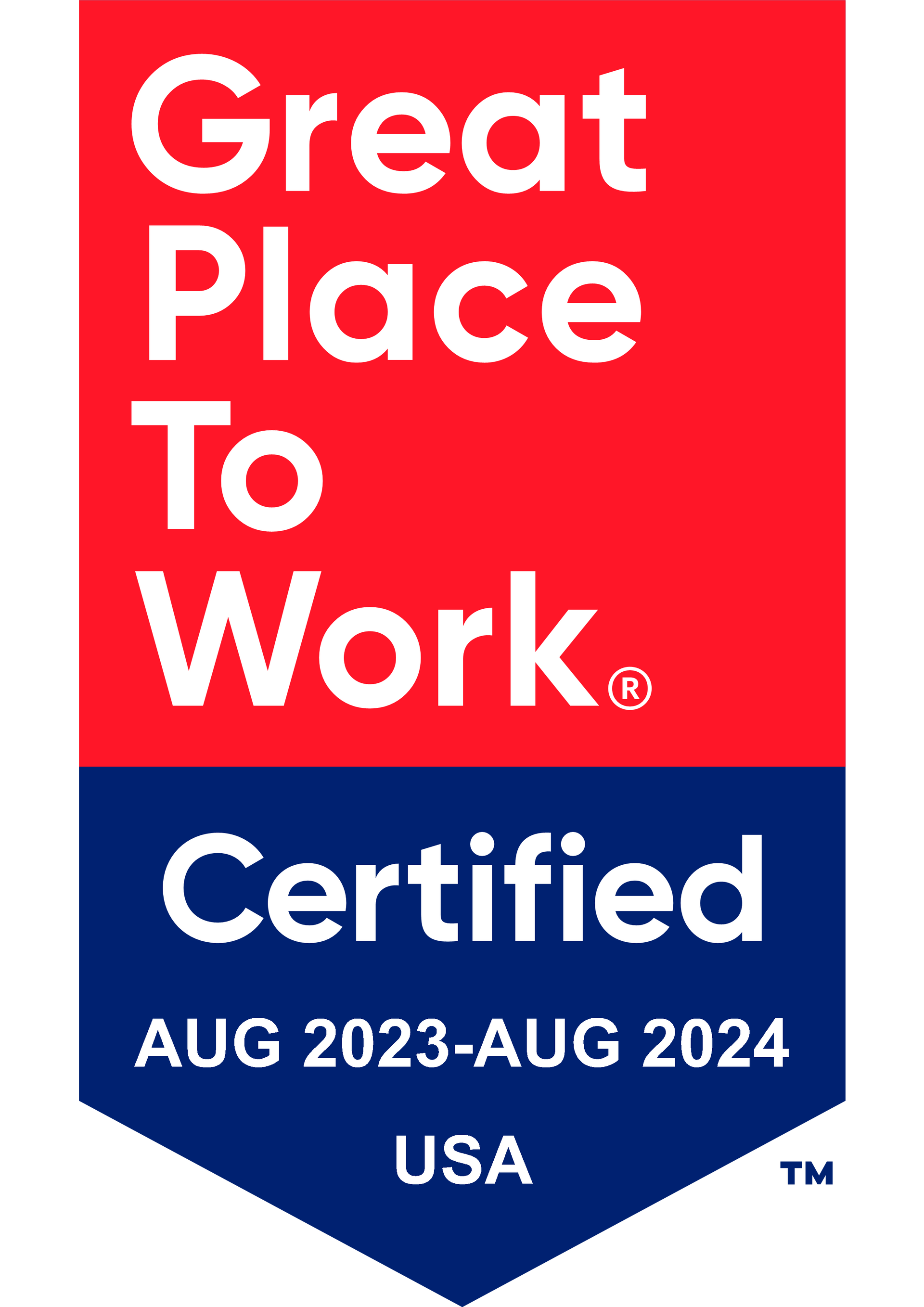Get in touch
408-366-8880
mymail@mailservice.com
employee benefit Insights

Employee Benefits

by Chris Freitas
•
13 May, 2024
As rates continue to climb, many companies find themselves questioning whether it is the right time to switch their insurance and employee benefits broker. It's a significant decision, especially given that most firms are hesitant due to the anticipated complications. However, the process of finding and transitioning to a more adept broker is often simpler and less disruptive than many anticipate. This might be the ideal opportunity to seek a new partnership, especially with the rising costs of insurance and employee benefits. Speak with KBI Benefits today to allow our experts to handle the transition for you while saving your company as much as 40% on your benefits. Reasons to Consider a Broker Change The decision to change brokers typically stems from a loss of confidence in the broker. This could be due to strategic oversights on the broker’s end, such as failing to accurately predict market trends, a weak relationship with insurers, or an inability to procure the best coverage at competitive prices. Moreover, subpar service can leave clients feeling neglected and wondering what they’re paying their broker for. In other cases, a company might simply outgrow its current broker. As the business expands, it may require a broker with more advanced technical skills or better capabilities in managing costs effectively for a growing firm. How to Change Employee Benefit Brokers Contrary to common belief, switching brokers mid-term usually has minimal impact on the insurance or benefits programs and does not adversely affect employees. The existing coverage continues unchanged, while the new broker starts representing the client immediately with the existing carriers. A noteworthy consideration is the handling of ongoing claims. If the current broker is involved in resolving claims, the new broker will need to take over this responsibility. Similarly, for employee benefits, the transition to a new broker is smooth, with the new broker taking over responsibilities, including any dispute resolutions. Minor logistical tasks such as redirecting calls to the employee claims center and communicating details during open enrollment periods are managed efficiently by the successor broker. Benefits of Changing Brokers Mid-Term Changing brokers mid-policy can provide several advantages. Firstly, it allows the new broker ample time to familiarize themselves with the client’s program before renewal negotiations, offering a strategic advantage. Secondly, a new broker can quickly address technical policy issues or service gaps, potentially enhancing the user experience and reflecting positively on the management. Most importantly, there is typically no financial cost associated with changing brokers mid-term. Business insurance brokers generally begin servicing a new client without immediate payment, with compensation following at the next renewal cycle. In the realm of employee benefits, new brokers usually receive payment after insurance company fees are transferred, which occurs about two months after the change is initiated. How to Initiate a Broker Change Breaking up with your current broker is more straightforward than it seems, with much of the heavy lifting done by the new broker. The process starts with a Broker of Record (BOR) letter, a recognized industry standard for changing brokers. The client needs to print this letter on their company letterhead, sign it, and forward it to the new broker, who then submits it to the client’s insurance companies. There's typically a brief waiting period of five to ten days before the change takes effect, providing a short window for reconsideration. Once the insurance companies are notified, they usually confirm the change by contacting the successor broker. While it’s considered a professional courtesy to inform the current broker in advance about the change, it isn’t mandatory. The entire transition process can generally be completed in less than a month, allowing businesses to quickly benefit from their new broker’s services. Changing your benefit brokers need not be a daunting task. With careful planning and the right guidance, businesses can make the transition smoothly and reap significant benefits from a new brokerage partnership. Speak with a KBI Benefits agent today to initiate the process and start saving on your benefits sooner.

by Chris Freitas
•
06 May, 2024
Despite their essential role in keeping the population food secure, farmers often struggle to protect their own families from sickness and mounting medical bills. That’s where KBI Benefits steps in, proudly offering UnitedAg medical plans tailored to meet the unique needs of agricultural professionals. If you’re in the agriculture industry and you’re looking for affordable healthcare coverage and wellness initiatives for your employees, let's discuss how KBI Benefits, partnered with UnitedAg, is making that process easier than ever. United Ag: Powering the Agriculture Industry’s Healthcare At KBI Benefits, we’re thrilled to extend UnitedAg medical plans to members of the agriculture industry. Our commitment to providing exceptional benefits packages is matched only by our dedication to supporting the health and well-being of your workforce. UnitedAg is designed to provide lower medical plan rates to agribusinesses than if they purchased a plan on the open market. KBI Benefits is simplifying this process even further. Speak with a KBI Benefits agent today to sign up for a UnitedAg medical plan for your business. Navigating the Enrollment Process Enrolling in UnitedAg medical insurance through KBI Benefits is a straightforward process designed to streamline your experience. Our team of experts is here to guide you every step of the way, ensuring that you understand your options and can make informed decisions for your organization. Simply reach out to a KBI Benefits representative today to kickstart the enrollment process and embark on a journey toward comprehensive healthcare coverage. Key Features and Benefits Highlighting the advantages of UnitedAg medical plans is essential to understanding the value they bring to your agribusiness. From extensive wellness programs to cost-saving initiatives, these plans are designed to prioritize the health and happiness of your workforce. Let’s delve into some of the standout features: Comprehensive Coverage: UnitedAg medical plans offer robust coverage options tailored to the needs of agricultural businesses. Whether it's routine check-ups or specialized treatments, you can rest assured knowing that your team has access to top-tier healthcare services. Wellness Programs: Promoting employee well-being is at the core of UnitedAg's mission. With a range of wellness programs aimed at fostering healthy habits and lifestyles, you can empower your workforce to thrive both in and out of the workplace. Flexibility and Support: KBI Benefits understands that every organization has unique needs. That’s why we offer unparalleled flexibility in crafting commercial medical insurance solutions that align with your specific requirements. Our team is here to provide personalized support and guidance, ensuring that you receive the coverage that best suits your organization. Exclusive Benefits: From free generics at Costco Pharmacies to virtual primary care services, UnitedAg medical plans come packed with exclusive benefits designed to enhance the overall healthcare experience for your team. With features like mental health support, travel reimbursement programs, and built-in Cobra administration, you can rest assured that your workforce is well taken care of. Empower Your Organization Today In conclusion, accessing UnitedAg medical insurance through KBI Benefits is a game-changer for agricultural businesses looking to prioritize the health and well-being of their workforce. With comprehensive coverage, extensive wellness programs, and exclusive benefits, these plans empower you to provide top-tier healthcare solutions to your team. Don’t wait any longer – reach out to a KBI Benefits representative today to unlock the benefits of UnitedAg medical insurance for your organization.

by Chris Freitas
•
23 Apr, 2024
As the agricultural sector evolves and expands, the need for comprehensive medical plans tailored to the unique demands of this industry has become more pronounced. That’s why KBI Benefits is proud to offer UnitedAg medical plans designed specifically for agribusinesses, providing a robust solution to protect your employees and your agribusiness. Let’s discuss what agriculture medical insurance is, who it’s for, and how KBI Benefits can help you get started. What is Agriculture Medical Insurance? Agriculture medical insurance, particularly in the context of medical plans, offers coverage that protects farm owners, operators, and their employees against the financial burdens of medical expenses. This insurance is essential for mitigating the risks associated with illnesses and injuries that can be common in a physically demanding job. Health insurance for agribusinesses not only covers medical and hospital bills but often also includes wellness programs and preventive care, which are crucial in maintaining a healthy workforce. How to Receive Agriculture Insurance for Your Agribusiness The scope of agriculture medical insurance, extends to many entities in the agricultural sector, including entities that empower or influence agricultural businesses. This includes: Agriculture Production: Businesses engaged in crop and livestock production. Agricultural Services: Companies providing support services to the agriculture sector, such as soil preparation, planting, and harvesting. Forestry and Timber: Entities involved in the management and production of forest resources. Commercial Fishing and Hatcheries: Businesses focused on the breeding, raising, and harvesting of fish and other aquatic species. Agribusiness Support: Firms involved in the processing, distribution, and marketing of agricultural products, as well as those supplying equipment and inputs like seeds, chemicals, and machinery. To qualify for UnitedAg medical plans through KBI Benefits, companies must demonstrate that they derive at least 51% of their income from production agriculture or agribusiness-related activities. Most businesses within the Standard Industrial Classification (SIC) Codes for Agriculture, Forestry, and Fishing are eligible, although there are specific criteria and exceptions that may apply. Speak with a KBI Benefits agent today to learn more. How KBI Benefits Facilitates Agriculture Insurance KBI Benefits, in collaboration with UnitedAg, provides specialized medical plans tailored to the needs of the agricultural industry. Our recent appointment to offer agriculture medical plans underscores our commitment to enhancing the well-being of those who work hard to feed the nation. Here's how we help: Customized Solutions: We understand that no two agribusinesses are the same. KBI Benefits offers personalized consultations to ensure that the coverage meets the specific needs of each business, considering factors like company size, types of activities, and employee needs. Easy Accessibility: Our team of dedicated agents is just a call away, ready to guide you through the process of selecting and setting up the right plan for your business. Comprehensive Coverage: The UnitedAg medical plans offered by KBI Benefits cover a range of health services, from emergency care and hospitalization to preventive wellness programs, ensuring comprehensive coverage for your workforce. Support and Advisory: Beyond just providing insurance, we serve as a partner in ensuring the health and productivity of your employees, offering ongoing support and advice regarding your agriculture medical insurance to keep your operations running smoothly. Conclusion The health of your employees is as critical as the health of your agribusiness. In an industry as physically demanding as agriculture, having the right medical coverage is not just beneficial; it's essential. Protect your most valuable asset—your people— by speaking with a KBI Benefits agent today . We'll help you choose the agriculture medical insurance plan that best suits your agribusiness's needs, ensuring peace of mind and fostering a healthier, more productive workforce.

by Chris Freitas
•
11 Apr, 2024
Self-funded health plans represent a departure from traditional fully-insured plans where employers pay a fixed premium to an insurance carrier. Instead, in a self-insured model, employers pay for out-of-pocket claims as they are incurred, often setting aside funds in a trust to cover these expenses. Let’s explore the positives and negatives of this funding model and whether your company could benefit from adopting it. For more personalized assistance with improving your employee benefits ROI, speak with a KBI Benefits agent today. What Are Self-Insured Health Plans? At its core, a self-insured health plan allows an employer to tailor healthcare benefits to the specific needs of its workforce, avoiding the one-size-fits-all approach of traditional insurance policies. This customization is not just about meeting employees' health needs but also about financial management. By directly funding healthcare claims, employers can improve cash flow and save on the premium taxes and margins that insurance carriers typically charge. Furthermore, self-insured plans offer employers the opportunity to retain control over the plan's reserves, potentially earning interest income that would otherwise benefit the insurance carrier. They also allow for greater flexibility in selecting healthcare providers or networks that best match the needs of their employees, providing a potentially higher quality of care. Why Self-Insured Health Plans? The appeal of self-insured plans is underscored by the numbers. A report by the Employee Benefit Research Institute highlighted that a significant portion of the workforce is covered by employer-sponsored self-insured plans. This model is commonly chosen for its numerous advantages, including customizable health care plans, improved cash flow due to the absence of pre-paid premiums, exemption from state health insurance regulations, and savings on state premium taxes. However, the suitability of self-insurance varies by employer. While large employers may comfortably absorb the financial variability of claims, smaller employers or those with less stable cash flows may find self-insuring risky. Despite this, even some small businesses with as few as 25 employees have successfully adopted self-insured health plans, highlighting the model's flexibility. Unsure if this funding model suits your company? Speak with a KBI Benefits agent today to schedule an in-depth audit. Risk Management and Administration One of the critical concerns with self-insuring is the potential for unpredicted or catastrophic claims. To mitigate this, many employers purchase stop-loss insurance , which covers claims exceeding a certain amount. This strategy helps manage risk while still allowing employers to enjoy the benefits of self-insuring. Claims administration is another crucial aspect. Employers may choose to handle it in-house or outsource it to a third-party administrator (TPA). TPAs can offer valuable services in setting up and managing self-insured plans, including coordinating stop-loss insurance and provider networks. Compliance and Employee Contributions Self-insured plans are subject to a range of federal laws, including ERISA, HIPAA, and COBRA. These regulations ensure that plans provide fair and consistent benefits and protect employees' rights. Employee contributions towards their coverage continue to be processed through payroll deductions, maintaining a familiar structure for funding their benefits. The Conclusion: Finding the Right Balance While self-insured health plans offer numerous advantages, they are not suitable for every business. The decision to self-insure should be based on a comprehensive analysis of an employer's financial stability, risk tolerance, and the specific healthcare needs of its workforce. For those considering this path, working with a knowledgeable partner can make all the difference. This is where KBI Benefits comes in. Specializing in developing creative financing models, KBI Benefits can enhance your employee benefits ROI by as much as 40%. By partnering with KBI Benefits, employers can discover the optimal funding structure for their benefits plan, tailored to their unique needs and circumstances. Whether you're looking to transition to a self-insured model or optimize an existing plan, speaking with a KBI Benefits agent today could be the first step towards a more efficient and effective benefits strategy.

by Chris Freitas
•
09 Apr, 2024
Self-funded health plans represent a departure from traditional fully-insured plans where employers pay a fixed premium to an insurance carrier. Instead, in a self-insured model, employers pay for out-of-pocket claims as they are incurred, often setting aside funds in a trust to cover these expenses. Let’s explore the positives and negatives of this funding model and whether your company could benefit from adopting it. For more personalized assistance with improving your employee benefits ROI, speak with a KBI Benefits agent today. What Are Self-Insured Health Plans? At its core, a self-insured health plan allows an employer to tailor healthcare benefits to the specific needs of its workforce, avoiding the one-size-fits-all approach of traditional insurance policies. This customization is not just about meeting employees' health needs but also about financial management. By directly funding healthcare claims, employers can improve cash flow and save on the premium taxes and margins that insurance carriers typically charge. Furthermore, self-insured plans offer employers the opportunity to retain control over the plan's reserves, potentially earning interest income that would otherwise benefit the insurance carrier. They also allow for greater flexibility in selecting healthcare providers or networks that best match the needs of their employees, providing a potentially higher quality of care. Why Self-Insured Health Plans? The appeal of self-insured plans is underscored by the numbers. A report by the Employee Benefit Research Institute highlighted that a significant portion of the workforce is covered by employer-sponsored self-insured plans. This model is commonly chosen for its numerous advantages, including customizable health care plans, improved cash flow due to the absence of pre-paid premiums, exemption from state health insurance regulations, and savings on state premium taxes. However, the suitability of self-insurance varies by employer. While large employers may comfortably absorb the financial variability of claims, smaller employers or those with less stable cash flows may find self-insuring risky. Despite this, even some small businesses with as few as 25 employees have successfully adopted self-insured health plans, highlighting the model's flexibility. Unsure if this funding model suits your company? Speak with a KBI Benefits agent today to schedule an in-depth audit. Risk Management and Administration One of the critical concerns with self-insuring is the potential for unpredicted or catastrophic claims. To mitigate this, many employers purchase stop-loss insurance , which covers claims exceeding a certain amount. This strategy helps manage risk while still allowing employers to enjoy the benefits of self-insuring. Claims administration is another crucial aspect. Employers may choose to handle it in-house or outsource it to a third-party administrator (TPA). TPAs can offer valuable services in setting up and managing self-insured plans, including coordinating stop-loss insurance and provider networks. Compliance and Employee Contributions Self-insured plans are subject to a range of federal laws, including ERISA, HIPAA, and COBRA. These regulations ensure that plans provide fair and consistent benefits and protect employees' rights. Employee contributions towards their coverage continue to be processed through payroll deductions, maintaining a familiar structure for funding their benefits. The Conclusion: Finding the Right Balance While self-insured health plans offer numerous advantages, they are not suitable for every business. The decision to self-insure should be based on a comprehensive analysis of an employer's financial stability, risk tolerance, and the specific healthcare needs of its workforce. For those considering this path, working with a knowledgeable partner can make all the difference. This is where KBI Benefits comes in. Specializing in developing creative financing models, KBI Benefits can enhance your employee benefits ROI by as much as 40%. By partnering with KBI Benefits, employers can discover the optimal funding structure for their benefits plan, tailored to their unique needs and circumstances. Whether you're looking to transition to a self-insured model or optimize an existing plan, speaking with a KBI Benefits agent today could be the first step towards a more efficient and effective benefits strategy.

by Chris Freitas
•
02 Apr, 2024
Employee benefit plan administration is not just an essential HR task, but an essential step in hiring and retaining high quality employees for the best possible ROI. Small business owners understand better than most that a highly optimized value proposition for hiring new employees makes the difference between profitability and unprofitability. This is where the expertise of benefit consulting becomes invaluable, guiding you through the complexities of benefit plan administration and ensuring your business is positioned as an employer of choice. For personalized assistance with an expert, speak with a KBI agent today . Understanding Employee Benefits Administration At its core, employee benefits administration is about crafting and managing the suite of benefits your company offers to its employees. This critical HR function spans evaluating and communicating employee benefits, facilitating benefits enrollment services, and ensuring compliance with relevant legislation, such as ERISA regulations. When done right, your employee benefits administration system fosters employee advocacy, underlining your company’s commitment to your team’s well-being and professional growth. Choosing the Right Benefits Administration System Today's market offers a range of HR benefits platforms, from full-service benefits administration software to specialized online HR portals that streamline enrollment and management of benefits. These systems are pivotal in communicating employee benefits effectively, ensuring every team member understands and appreciates the full value of what's available to them. For small businesses, the assistance of employee benefit brokers like KBI Benefits can be a game-changer. KBI Benefits offers employee benefits consulting services that can tailor a benefits package to your unique business needs, ensuring you’re competitive yet compliant with all HR compliance requirements. The Pillars of Effective Benefits Administration Strategic Decision-Making: The journey begins with deciding which benefits to offer. This involves a deep dive into employee education about the types of benefits that matter most to your team, from health insurance to wellness programs that support their overall well-being. You can learn more about popular employee benefits offerings in this blog . Ensuring Compliance: Navigating the legal landscape, including ERISA compliance, is a task where an ERISA attorney may be invaluable. Their expertise ensures your benefits plan not only meets legal standards but also supports your business goals without unintended liabilities. KBI Benefits stays the forefront of compliance laws so you can focus on running your business. To speak with an ERISA compliance professional, reach out to KBI Benefits today. Employee Engagement: Communicating employee benefits effectively is crucial . An online HR portal can be an excellent tool for this, providing a one-stop-shop for employees to explore their benefits, enroll in new programs, and seek employee claim assistance when needed. Continuous Improvement: Regular HR reporting and feedback from your team will highlight areas for enhancement, whether it's adding new benefits, adjusting existing ones, or improving the way benefits are communicated. How to Get Started with Your Benefit Plan Administration Navigating the intricacies of employee benefit services can be daunting, especially for small businesses without large HR departments. This is where KBI Benefits shines. Our approach to employee benefits consulting services focuses on optimizing your benefits expenditure while maintaining or enhancing the quality of your offerings. By utilizing proprietary funding models and detailed cost reporting, KBI Benefits is uniquely positioned to reduce your benefits costs by as much as 40%. Speak with a KBI Benefits agent today to start strategizing.

by Chris Freitas
•
25 Mar, 2024
Navigating the world of employee benefits can feel like trying to solve a puzzle, especially when you're aiming to balance providing high-quality benefits with managing costs. As business owners wrestle with the rising premiums of group health insurance, the quest for creative financing methods to reduce benefits-related expenditures has never been more critical. However, there's a silver lining in the form of alternative funding options that can help companies, whether they have 25 or 2,500 employees, potentially slash their benefits costs. Here's how you can save money on your employee benefits, keeping both your team and budget happy. How to Save Money on Your Employee Benefits Gone are the days when only the largest corporations could think about stepping away from fully-funded insurance programs towards self-funded options. Thanks to the evolution of the market and the introduction of the Affordable Care Act, a myriad of alternative funding options have emerged. These alternatives provide nearly any business owner the opportunity to explore different funding arrangements based on their financial capacity, objectives, and employee demographics. Alternative Employee Benefit Funding Options Fully-Insured Plans : This traditional route offers the least risk to employers but comes with higher costs. You pay a premium to an insurance carrier for a specified plan, with no financial surprises but also no savings on lower-than-expected claims. Self-Insured Plans : Self-funded employee benefits refer to a system where, instead of paying premiums to an insurance company, an employer directly assumes the financial risk of providing healthcare benefits to its employees. Under this model, the company pays for each claim as it arises, typically setting aside a pool of funds for this purpose. Companies might opt for this financing choice to gain more control over their benefits plan, enjoy potential cost savings, and increase flexibility in plan design. This approach allows businesses to tailor their benefits offerings more closely to the needs of their employees and can lead to significant savings, as they avoid the overhead and profit margins built into traditional insurance premiums. Level Funding : Level funded employee benefits are a hybrid model that combines elements of both fully insured and self-funded insurance plans. In this approach, an employer pays a fixed monthly fee to a third-party administrator or insurance provider, which covers estimated claim costs, administrative fees, and stop-loss insurance. This setup aims to offer the cost-saving and customization benefits of self-funding, with the financial predictability and lower risk of fully insured plans. Captive Funding: Captive funded employee benefits involve companies coming together to form their own insurance company, or "captive," to finance their risks, including employee benefits. This approach allows businesses to pool their resources to self-insure, sharing the risks and rewards of funding their health plans collectively. Companies might opt for captive funding as a strategic choice to gain greater control over insurance costs, benefit from potential savings through reduced insurance overheads and profit margins, and achieve more stable premiums over time. Consortium Funding: Consortium funded employee benefits involve a group of companies coming together to pool their resources and share the risks associated with providing healthcare benefits to their employees. This collective approach allows smaller employers to leverage the buying power and risk-sharing advantages typically available only to larger organizations. Reference-Based Pricing : Reference-based pricing (RBP) for employee benefits is an alternative payment model that sets spending limits on certain medical services. Instead of using traditional insurance networks, employers pay healthcare providers based on a fixed reference point—often a percentage above the Medicare reimbursement rate for the same services. This method aims to contain costs by eliminating the wide variance in pricing for healthcare services and creating price transparency. The Benefits of Being Creative By stepping out of the fully insured comfort zone and exploring alternative funding methods, employers can gain greater control over their benefits plans. This control enables a more tailored approach to benefits that can better meet employees' needs while managing costs effectively. Additionally, alternative funding models can provide more predictability in expenses, avoiding the month-to-month variability that can make budgeting a headache. The Benefits of a Benefits Consultant Saving on employee benefits through alternative funding methods can be complex and daunting, but that's where KBI Benefits comes in. Our clients have saved up to 40% on their employee benefits thanks to our decades of experience in the space and unique approach to analyzing expenditures. Ready to explore how you can provide excellent employee benefits while keeping an eye on your bottom line? Speak with a KBI Benefits representative today.

by Chris Freitas
•
18 Mar, 2024
Navigating the world of employee benefits can feel like trying to solve a puzzle, especially when you're aiming to balance providing high-quality benefits with managing costs. As business owners wrestle with the rising premiums of group health insurance, the quest for creative financing methods to reduce benefits-related expenditures has never been more critical. However, there's a silver lining in the form of alternative funding options that can help companies, whether they have 25 or 2,500 employees, potentially slash their benefits costs. Here's how you can save money on your employee benefits, keeping both your team and budget happy. How to Save Money on Your Employee Benefits Gone are the days when only the largest corporations could think about stepping away from fully-funded insurance programs towards self-funded options. Thanks to the evolution of the market and the introduction of the Affordable Care Act, a myriad of alternative funding options have emerged. These alternatives provide nearly any business owner the opportunity to explore different funding arrangements based on their financial capacity, objectives, and employee demographics. Alternative Employee Benefit Funding Options Fully-Insured Plans : This traditional route offers the least risk to employers but comes with higher costs. You pay a premium to an insurance carrier for a specified plan, with no financial surprises but also no savings on lower-than-expected claims. Self-Insured Plans : Self-funded employee benefits refer to a system where, instead of paying premiums to an insurance company, an employer directly assumes the financial risk of providing healthcare benefits to its employees. Under this model, the company pays for each claim as it arises, typically setting aside a pool of funds for this purpose. Companies might opt for this financing choice to gain more control over their benefits plan, enjoy potential cost savings, and increase flexibility in plan design. This approach allows businesses to tailor their benefits offerings more closely to the needs of their employees and can lead to significant savings, as they avoid the overhead and profit margins built into traditional insurance premiums. Level Funding : Level funded employee benefits are a hybrid model that combines elements of both fully insured and self-funded insurance plans. In this approach, an employer pays a fixed monthly fee to a third-party administrator or insurance provider, which covers estimated claim costs, administrative fees, and stop-loss insurance. This setup aims to offer the cost-saving and customization benefits of self-funding, with the financial predictability and lower risk of fully insured plans. Captive Funding: Captive funded employee benefits involve companies coming together to form their own insurance company, or "captive," to finance their risks, including employee benefits. This approach allows businesses to pool their resources to self-insure, sharing the risks and rewards of funding their health plans collectively. Companies might opt for captive funding as a strategic choice to gain greater control over insurance costs, benefit from potential savings through reduced insurance overheads and profit margins, and achieve more stable premiums over time. Consortium Funding: Consortium funded employee benefits involve a group of companies coming together to pool their resources and share the risks associated with providing healthcare benefits to their employees. This collective approach allows smaller employers to leverage the buying power and risk-sharing advantages typically available only to larger organizations. Reference-Based Pricing : Reference-based pricing (RBP) for employee benefits is an alternative payment model that sets spending limits on certain medical services. Instead of using traditional insurance networks, employers pay healthcare providers based on a fixed reference point—often a percentage above the Medicare reimbursement rate for the same services. This method aims to contain costs by eliminating the wide variance in pricing for healthcare services and creating price transparency. The Benefits of Being Creative By stepping out of the fully insured comfort zone and exploring alternative funding methods, employers can gain greater control over their benefits plans. This control enables a more tailored approach to benefits that can better meet employees' needs while managing costs effectively. Additionally, alternative funding models can provide more predictability in expenses, avoiding the month-to-month variability that can make budgeting a headache. The Benefits of a Benefits Consultant Saving on employee benefits through alternative funding methods can be complex and daunting, but that's where KBI Benefits comes in. Our clients have saved up to 40% on their employee benefits thanks to our decades of experience in the space and unique approach to analyzing expenditures. Ready to explore how you can provide excellent employee benefits while keeping an eye on your bottom line? Speak with a KBI Benefits representative today.

by Chris Freitas
•
11 Mar, 2024
From implementing new technologies to navigating complex regulatory frameworks, the realm of human resources (HR) management demands expertise and adaptability. This is where HR consulting firms step in, offering invaluable assistance to businesses seeking to optimize their HR strategies and cultivate a thriving work culture. Let’s discuss the ways your business could benefit from human resources consultant expertise. How Does a Human Resources Consulting Firm Benefit a Business? HR consulting firms serve as specialized entities that offer tailored solutions to diverse HR-related needs within organizations. Unlike in-house HR departments, these firms bring external expertise and perspective, providing independent insights and innovative approaches to address specific projects or objectives. One of the primary advantages of engaging businesses like KBI Benefits who offer HR consulting services lies in their ability to offer specialized expertise tailored to meet the unique needs of each client. Whether it's HR software implementation, strategic planning, audits, or special projects like mergers and acquisitions, these firms provide a spectrum of services designed to enhance organizational efficiency and effectiveness. Another fundamental aspect of HR consulting is its profound impact on shaping and enhancing the work culture within organizations. By fostering an environment of trust, transparency, and empowerment, KBI Benefits plays a pivotal role in nurturing a positive and productive workplace atmosphere. Here's how: Strategic Talent Management: The HR consultant experts at KBI Benefits collaborate with businesses to develop robust talent management strategies, encompassing recruitment, workforce planning, and employee engagement initiatives. By aligning talent acquisition with organizational goals and values, these strategies ensure the retention and development of top-tier talent, thereby bolstering workforce effectiveness. Diversity, Equity, and Inclusion (DEI) Initiatives: In today's diverse and inclusive work environments, HR experts offer invaluable expertise in DEI initiatives. By integrating diversity and inclusion principles into recruitment, training, and performance management processes, these firms foster a culture of belonging and respect, driving innovation and creativity across the organization. Employee Engagement and Well-being: Comprehensive HR assistance is rooted in thorough research. KBI Benefits prioritizes employee engagement and well-being through comprehensive surveys, assessments, and interventions. By proactively addressing factors influencing job satisfaction and morale, such as workload, recognition, and work-life balance, KBI Benefits enhances employee productivity and retention while mitigating burnout and turnover risks. Change Management and Communication: During periods of organizational change or transformation, HR experts serve as catalysts for effective change management and communication. By facilitating open dialogue, providing transparent information, and offering support mechanisms, these consultants mitigate resistance to change and ensure smooth transitions, thereby fostering resilience and adaptability among employees. Turn to KBI Benefits for Human Resources Consulting With decades of collective experience, KBI Benefits stands out as a premier source of HR consulting committed to empowering businesses with strategic HR solutions. Leveraging a wealth of industry knowledge and a client-centric approach, KBI Benefits helps organizations streamline HR processes, navigate regulatory complexities, and cultivate inclusive work cultures conducive to growth and success. Speak with a KBI Benefits agent today to learn more about our HR consulting services.
Services
Latest Thinking

by Chris Freitas
•
13 May, 2024
As rates continue to climb, many companies find themselves questioning whether it is the right time to switch their insurance and employee benefits broker. It's a significant decision, especially given that most firms are hesitant due to the anticipated complications. However, the process of finding and transitioning to a more adept broker is often simpler and less disruptive than many anticipate. This might be the ideal opportunity to seek a new partnership, especially with the rising costs of insurance and employee benefits. Speak with KBI Benefits today to allow our experts to handle the transition for you while saving your company as much as 40% on your benefits. Reasons to Consider a Broker Change The decision to change brokers typically stems from a loss of confidence in the broker. This could be due to strategic oversights on the broker’s end, such as failing to accurately predict market trends, a weak relationship with insurers, or an inability to procure the best coverage at competitive prices. Moreover, subpar service can leave clients feeling neglected and wondering what they’re paying their broker for. In other cases, a company might simply outgrow its current broker. As the business expands, it may require a broker with more advanced technical skills or better capabilities in managing costs effectively for a growing firm. How to Change Employee Benefit Brokers Contrary to common belief, switching brokers mid-term usually has minimal impact on the insurance or benefits programs and does not adversely affect employees. The existing coverage continues unchanged, while the new broker starts representing the client immediately with the existing carriers. A noteworthy consideration is the handling of ongoing claims. If the current broker is involved in resolving claims, the new broker will need to take over this responsibility. Similarly, for employee benefits, the transition to a new broker is smooth, with the new broker taking over responsibilities, including any dispute resolutions. Minor logistical tasks such as redirecting calls to the employee claims center and communicating details during open enrollment periods are managed efficiently by the successor broker. Benefits of Changing Brokers Mid-Term Changing brokers mid-policy can provide several advantages. Firstly, it allows the new broker ample time to familiarize themselves with the client’s program before renewal negotiations, offering a strategic advantage. Secondly, a new broker can quickly address technical policy issues or service gaps, potentially enhancing the user experience and reflecting positively on the management. Most importantly, there is typically no financial cost associated with changing brokers mid-term. Business insurance brokers generally begin servicing a new client without immediate payment, with compensation following at the next renewal cycle. In the realm of employee benefits, new brokers usually receive payment after insurance company fees are transferred, which occurs about two months after the change is initiated. How to Initiate a Broker Change Breaking up with your current broker is more straightforward than it seems, with much of the heavy lifting done by the new broker. The process starts with a Broker of Record (BOR) letter, a recognized industry standard for changing brokers. The client needs to print this letter on their company letterhead, sign it, and forward it to the new broker, who then submits it to the client’s insurance companies. There's typically a brief waiting period of five to ten days before the change takes effect, providing a short window for reconsideration. Once the insurance companies are notified, they usually confirm the change by contacting the successor broker. While it’s considered a professional courtesy to inform the current broker in advance about the change, it isn’t mandatory. The entire transition process can generally be completed in less than a month, allowing businesses to quickly benefit from their new broker’s services. Changing your benefit brokers need not be a daunting task. With careful planning and the right guidance, businesses can make the transition smoothly and reap significant benefits from a new brokerage partnership. Speak with a KBI Benefits agent today to initiate the process and start saving on your benefits sooner.


